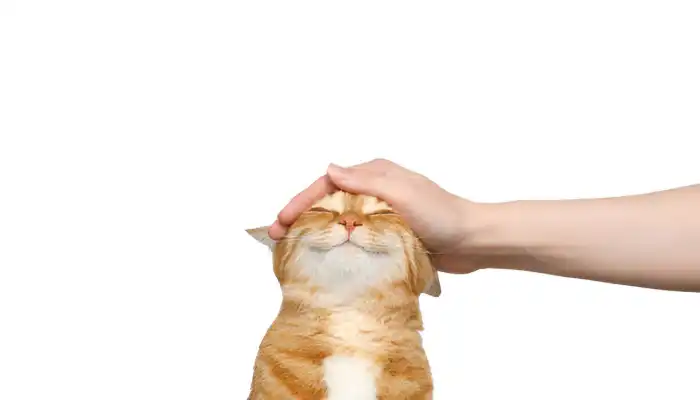How do I say “I am sorry” in cat translator? Cats communicate differently than humans, making it challenging to express apologies in a way they understand. If you’ve accidentally stepped on your cat’s tail or upset them, you might wonder how to say “I am sorry” in cat language.
While some apps claim cat translates human speech into cat sounds, their effectiveness is questionable. Instead, cats respond to body language, tone, and actions. This article explores cat translators, how cats perceive apologies, and the best ways to regain their trust.

Do Cats Understand Apologies?
How do I say “I am sorry” in cat translator? Cats do not process thoughts and emotions like humans, so they don’t expect apologies in the same way we do. Instead of words, they rely on body language, sounds, and actions to understand intentions.
Here are some key points to help you communicate your remorse effectively:
- Recognizes tone – Cats can detect emotions and undertones when speaking softly and gently to them.
- Apologies in cat language involve body language – Showing your cat that you intend no harm can come in the form of slow blinking, head tilting, or gentle and relaxed gestures.
- Restoring trust is the most important reason – When a cat feels scared or deceived, it may require a considerable amount of time for trust to be built.
Thus, while asking, how do I say “I am sorry” in the cat translator? Begs the question, a real-world relationship with a cat cannot be simplified to an application.
What Is A Cat Translator?
Usually, apps that claim to translate a cat’s vocal sounds into language are referred to as cat translators. Some of these apps even provide features where certain meowing sounds or purring noises can be played to “speak” to the cat.
However, if you’re wondering, how do I say “I am sorry” in cat translator? , relying on these apps may not be the most effective way, as cats respond better to actions and body language rather than artificial sounds.
Drawbacks of Cat Translators:
- They lack emotional understanding – The devices are made to detect sounds rather than the emotional aspect behind the sound made.
- Every cat is unique – The speech that is comfortable to one cat may not be comfortable to another.
- There is less regard to phrases spoken by the owner than body movements shown – Even if the app emits a ‘sorry meow’ towards your cat, your cat might not show the expected behavior.
To support your apology, a gentle tone, blended with patience and some body movements, would be more effective than solely depending on a translator.
Apologizing Without a Translator
If you need to ask, how do I say “I am sorry” in cat translator? The answer is actions. Here’s the best way to apologize properly to your cat:
How Do You Know Your Cat Is Unhappy?
Take note of these signs as a cat can be annoyed, angry, scared, or a mix of all three at once.
- Flicking Tail – If the tail is shaking at an accelerating rate, it is a tell that the cat is annoyed.
- Hissing or Growling – Funny enough, growling is a sign that they are threatened.
- Flattened Ears – Showing some discomfort, irritation, or even fear.
- Avoiding You – The cat is most likely hiding or needs some space.
A Step By Step Guide to Saying “I Am Sorry”
To apologize in cat language, do the following:
- Give Space – Some cats prefer to come themselves when they have calmed down, and you should give them some space when they are upset.
- Use A Soft Voice – Cat owners should try using a gentle tone to talk and do so while moving little to eliminate any sudden movements.
- Blink Slowly – Cats tend to trust each other, and so imitating this behavior is a good sign to show trust.
- Offer A Peace Treat – These can aid in finding their trust. A snack always does the work.
- Engage in Playtime – Try using a toy that the cat loves a lot and does fixations with, this way they will get used to you faster.
A sincere apology to your cat comes through patience, gentle gestures, and respect for their space. How do I say “I am sorry” in cat translator? Actions speak louder than words in the feline world!
Do Cats Forgive You?
Cats don’t hold grudges like humans, but they do remember negative experiences. Earning their trust back takes patience, gentle gestures, and respect for their space.
After making an apology, you will wish to confirm if your cat is at ease with you. Below is a simplified guide:
| The Signs Which Suggest Your Cat is Still Upset | The Signs Which Suggest That Your Cat is Now at Ease |
|---|---|
| Hides or stays away from you | Rubs against you |
| Aggressively flicks tail | Blinks slowly towards you |
| Growls or hisses | Kneads or purrs close to you |
| Body stance is stiff and firm | Playful and relaxed behavior |
Never force interaction if your cat keeps staying away from you. More time is needed, so try later.
While cats may not “forgive” in the human sense, understanding how to say “I am sorry” in cat translator can help rebuild trust. With time, affection, and positive interactions, your bond will strengthen.
Helping Your Cat Stay Calm
To cultivate a balanced relationship with your cat, try these methods to minimize the chances of having to give future explanations.
- Avoid Forcing Them To Play With You: Do not initiate physical interactions with them without their consent.
- Watch Out For Potential Health Problems: Pay attention to the small flicks of their tail or the movement of their ears.
- Designate Areas For Cats To Relax: Set up places where they can rest and feel safe.
- Incorporate Rewards- Give Them What They Want: Try to reward good deeds or behavior with a few treats or pats.
- Don’t Change Routine- Program Feeding Schedules Or Playtime: Use a feeding and playtime schedule because cats thrive off of predictability.
By implementing these strategies, you will not only limit the chances of fighting but will also encourage your cat to relax. A contented cat facilitates a happy relationship between the two of you.
Conclusion
How do I say “I am sorry” in cat translator? For your apologies to be appreciated, the translator app will have no use, as it is impaired in scenarios where there is the usage of body language and actions like such that cats employ. Rather use space for trust purposes and slow blinks, kind words, along with treats.
Your apologies might not mean much to your cat, but with time, the furry pet will learn to forgive. Ultimately, with love and devotion, your pet cat shall once again feel protected and appreciated.
